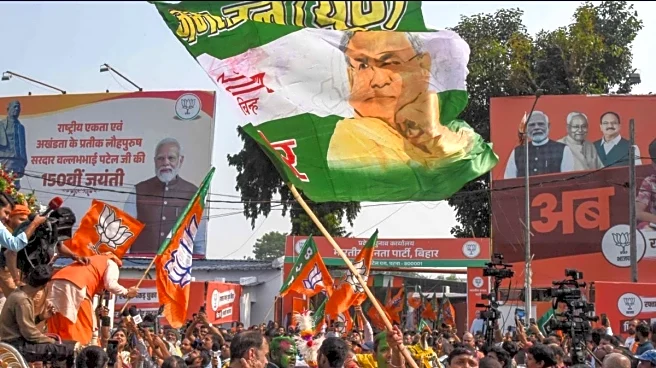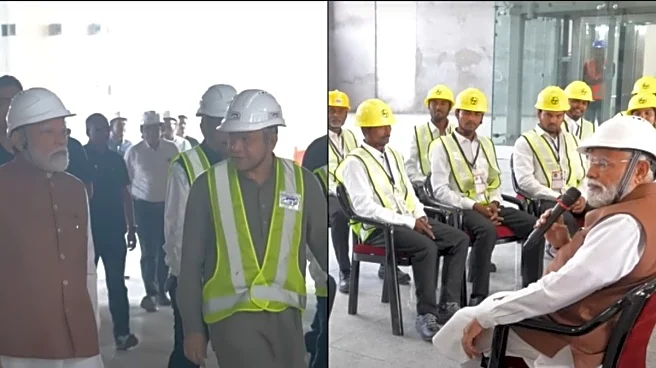Elections are often read through the familiar lenses of identity, alliances, or last-minute campaign drama. This analysis sees it through an economic lens. If voters overwhelmingly endorsed the NDA coalition,
it is not because they expect the state to suddenly conjure up lakhs of government jobs or industrial parks overnight. It is because they read their reality through a pragmatic economic filter. Bihar remains one of India’s poorest and youngest states, with per capita income hovering at just 33 per cent of the national average, the lowest in the country, and a work participation rate of 53.2 per cent versus the national 62.1 per cent. In such a case, voters behave like rational economic agents: they reward lower risk, greater certainty, and steady improvements in the economic conditions of daily life.
Over the last two decades, Bihar has seen a transformation in the “public goods baseline.” Roads, once synonymous with potholes, have expanded dramatically; rural roads alone have grown from a mere 1,000 km to nearly 100,000 km. Electrification has reached almost every village. Piped water supply is now near universal. Complaints continue, but law and order, compared to the volatile 1990s, has sharply stabilised.
These shifts are not glamorous, but they matter more to household economics than any industrial policy promise. A street vendor who no longer loses daylight hours due to power cuts, or a farmer who can move goods to a mandi without fearing banditry, experiences a reduction in daily economic friction. This reduction compounds. It improves productivity, encourages micro-entrepreneurship, raises time efficiency, and reduces “transactional vulnerability”. Voters intuitively sense this. They vote for continuity because discontinuity brings economic risk.
At the same time, Bihar’s political economy runs on another stabiliser: the architecture of cash transfers and in-kind support. In a state where private-sector job creation remains thin and agriculture is highly seasonal, transfers serve as risk-management tools. The recent Rs 10,000 transfer to 1.5 crore women, the tripling of monthly pensions for 1.1 crore elderly, widows and disabled persons from Rs 400 to Rs 1,100, and the backbone of food subsidies help smooth consumption in households deeply exposed to income volatility.
For the migrant worker who sends money home from a construction site in Surat or a factory in Faridabad, these transfers offer predictable liquidity when remittances fluctuate. For the widow in Madhubani, a pension increase is not welfare but survival insurance. And yet, while acknowledging their political efficacy, the fiscal conservative in me is uneasy. Bihar’s fiscal deficit has shot up to 9.2 per cent of GSDP, and welfare payouts now account for nearly 10 per cent of annual revenue expenditure. For Bihar, this scale of redistribution without corresponding revenue growth is clearly unsustainable. Transfers have political value, but transfers without a broader strategy for revenue mobilisation, private investment attraction, and workforce skilling can erode the fiscal space needed for long-run development.
Perhaps the most overlooked but economically significant factor shaping Bihar’s electoral behaviour is migration. More than half of Bihar’s households rely on migrant income, and in some districts like Gopalganj and Siwan, dependence exceeds 80 per cent. This makes Bihar uniquely integrated into India’s labour markets. A family in Darbhanga is not only assessing Bihar’s governance, it is indirectly assessing the economic climate in Maharashtra, Gujarat, Haryana, and the NCR. When factories hire more workers in Sanand, or construction contracts expand in Noida, Bihar’s household budgets strengthen.
When national infrastructure investment surges, it raises demand for migrant labour. This creates an “external labour market effect”, where state-level voter preferences are shaped by national growth patterns. The BJP’s narrative of national economic stewardship through infrastructure expansion, logistics corridors, and steady macroeconomic conditions therefore has direct resonance in Bihar, even if the investment physically occurs elsewhere. Migrants vote for stability at home because volatility elsewhere disrupts their incomes.
There is also a deeper economic realignment underway that cuts across social categories. While caste remains a potent force in Bihar, the last decade has seen the emergence of what might be termed “horizontal vulnerability alignment”. When economic insecurity is near-universal — i.e., incomes low, job prospects uncertain, and migration a near-default — the lived experiences of different castes converge in surprisingly similar ways.
A small shopkeeper in Arwal, a marginal farmer in Supaul, a construction labourer in Rohtas, and an unemployed graduate in Muzaffarpur all face versions of the same material anxieties. They want predictable governance, basic services, and a state that does not collapse under fiscal strain. In such an environment, the opposition’s reliance on traditional vote-bank blocs, rhetorical promises of government jobs, or redistributive bids without fiscal clarity fails to match the electorate’s more grounded economic expectations.
Finally, the verdict reflects a pronounced “stability premium.” Bihar has only 3,386 factories, compared to 40,121 in Tamil Nadu and 33,311 in Gujarat. Its land markets are slow-moving, contract enforcement remains weak, and administrative capacity is still evolving. For a state like Bihar, which is attempting to attract agro-processing units for makhana, mushrooms, and maize; textile and leather value chains; manufacturing units for construction materials; and food logistics infrastructure, political volatility is poison.
Investors, whether local or external, look for policy predictability and Centre-state alignment. This is especially relevant when private investment nationally has softened, with the private share of Gross Fixed Capital Formation falling to 33 per cent in 2023-24, from over 40 per cent in 2015-16. Bihar cannot afford disruptions at the very moment when it needs to signal seriousness to potential investors. Voters understand this intuitively. A stable formation appears safer for attracting the private capital the state desperately needs.
In the end, the NDA’s strong mandate is also an economic verdict rendered by millions who evaluated risk, weighed continuity against uncertainty, and judged performance not by grand narratives but by the accumulation of incremental improvements. But this mandate is not a finish line. Bihar cannot build its future on remittances and cash transfers alone. It needs faster growth, deeper industrialisation, a skills revolution, and hard fiscal choices. The voters have given the government a stable runway. Whether Bihar can finally lift itself out of the long shadow of economic divergence — where its per capita income has stagnated at one-third of the national average for two decades — now depends on the structural reforms undertaken in the years ahead.
The author (X: @adityasinha004) writes on macroeconomic and geopolitical issues. Views expressed in the above piece are personal and solely those of the author. They do not necessarily reflect News18’s views.







/images/ppid_a911dc6a-image-176343963234551383.webp)



/images/ppid_59c68470-image-176327753289152741.webp)

/images/ppid_59c68470-image-176339503179230444.webp)
/images/ppid_59c68470-image-17632925367819.webp)